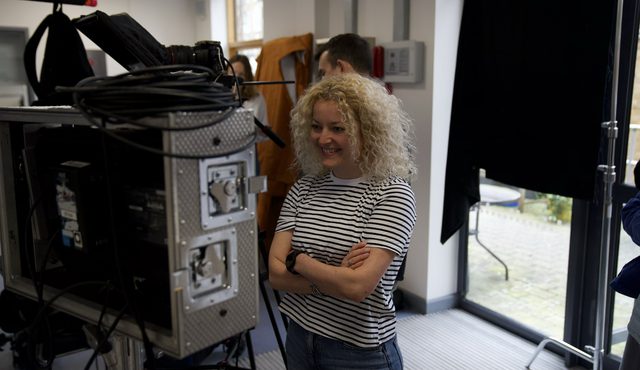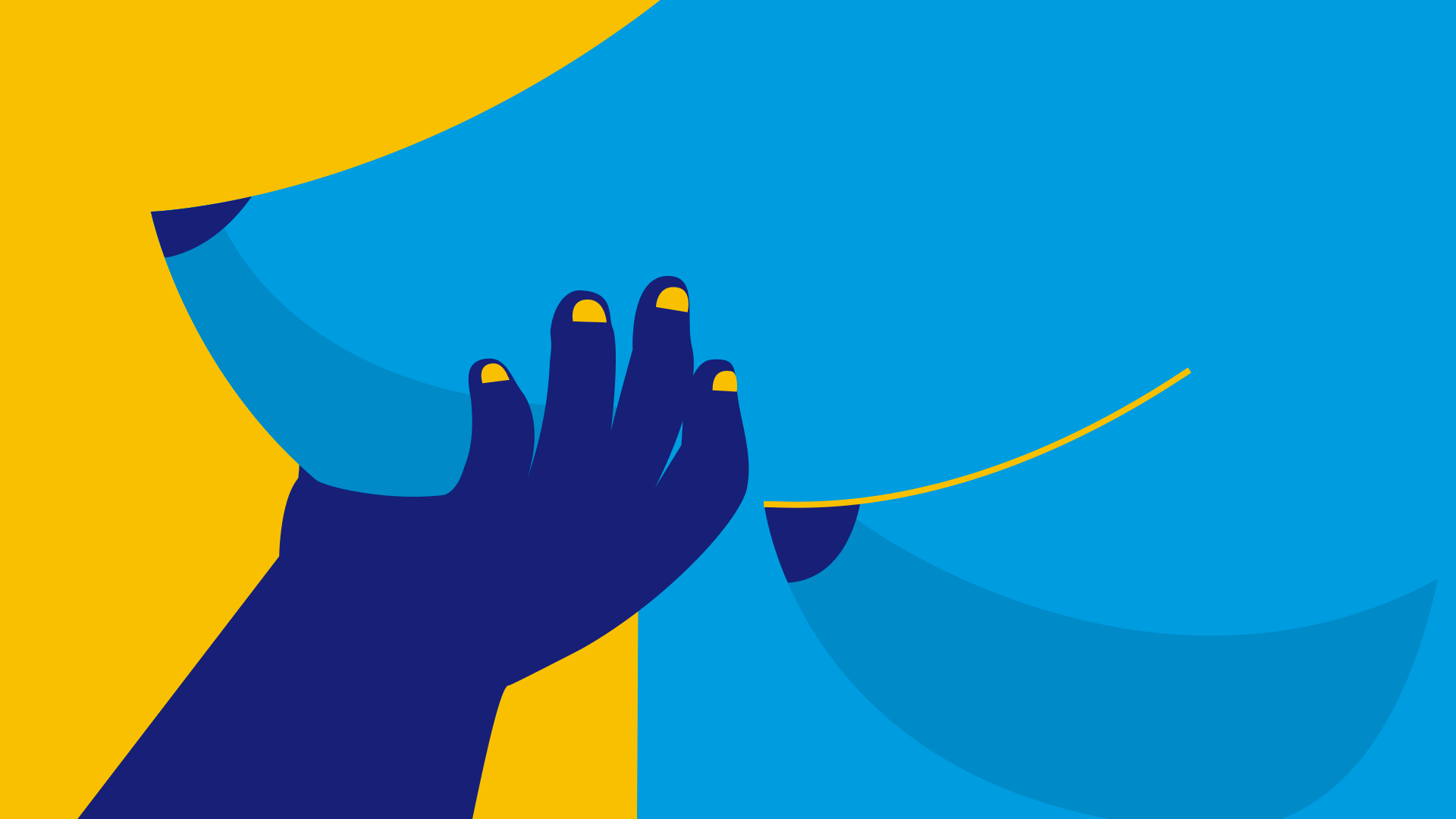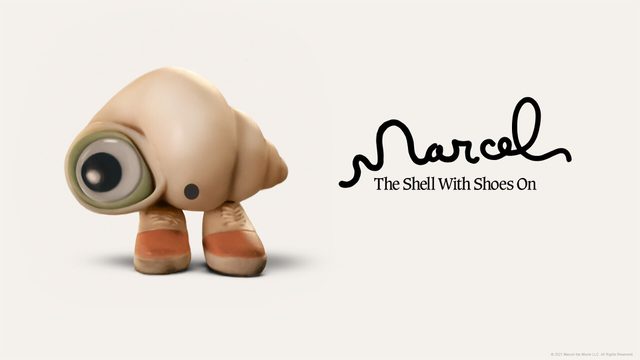Hello and welcome to the latest installment of, Nicely Said, bringing industry chat to life by talking to the people behind our work at Nice and Serious.
After graduating with a Fine Art degree and a passion for filmmaking, Sera retrained as a Film Editor and has progressed to Director at Nice and Serious. Whether she’s cooking up fresh ideas for clients, curating for short film festivals, or getting stuck into her own passion projects, she’s all about stories that matter. From shining a light on violence against women and girls to championing ethical porn, Serafima loves digging into topics that will spark awareness and action.
Most creatives will have heard the advice, “Don’t stay anywhere for more than two years.” So it’s a rare privilege to hear from someone who’s now in her 15th year at the same agency. In our chat, we unpack some of what Sera has learned over the years. Her observations. Her feelings. And her experiences with purpose-led storytelling.
So, let’s get into it!

-
So, how have you seen the purpose-led storytelling space change over the last 15 years?
The first thing I wondered was whether purpose-led storytelling was even a thing 15 years ago? It certainly wasn't something that I had heard of. I think it has gone from being a marketing tactic to basically a core business strategy for so many organisations.
In a way, social media has helped that. This is one of the few things I see as positive to come out of social media – people have become way more savvy about being lied to and crave authenticity. So that’s helped bring out the real purpose of storytelling and how, when done right, it can affect everything and everyone.
Looking back on the early days, what do you remember about when you first joined Nice and Serious, and what drew you to the agency?
I just remember thinking that it was like a tiny studio with a big vision. I could see that these guys were really hungry to create something that does good. And I wanted to join in whatever capacity I could, so I was like, “I am happy to just do anything for you guys, like I can just make tea and help with clients.” And they were like, “No, no, no.” Even though I entered without any experience of filmmaking whatsoever, I was treated as one of the team from day one.
Were there any particular campaigns or projects early on that felt like a turning point for you at the agency?
It was the first shoot that I went to and the first film I edited. We were raising awareness for BUAV (now Cruelty Free International) about airlines illegally carrying monkeys and chimps in the cargo of passenger planes.
Working with actors, makeup and special effects. Renting a studio. And being there with the crew and the cameras. I was just in love, and I knew that that's what I wanted to come back to, time and time again. Then seeing it out there in the world and hoping it would make a difference was very addictive. I still get a massive kick out of it now – that hasn't changed in 15 years. If anything, it's stronger.
Has the style or tone of video content changed in ethical campaigns, and how many trends do you think have stuck?
There used to be so many shock tactics, and you do still get that. The fearmongering approach tries to scare people into action. But now, we have more of a hand-holding approach, where you take the viewer on a journey.
Maybe you're raising awareness about cancer – there's always a way to do it that will make it a more positive experience. Even though the takeaway is a serious one. So for example, we had a campaign called Touch Yourself, which proved really successful. We wanted to help people spot the signs of breast cancer early and act – but in a not-scary way.

It's an awareness that sometimes slapping people around the face with something heavy actually does the opposite of inspiring action. It makes them switch off. It makes them turn the other way.
Yes! That’s the other thing – people get so jaded seeing negative content all the time. You want to turn your attention to something a bit more positive. As filmmakers and creators, we always need to find new ways of reaching people and putting the audience at the heart of it.
With the rise of social media, short-form storytelling, and AI – what excites or worries you about the future of video?
I worry a lot about people's attention spans and the way content is consumed these days. As a filmmaker, I'm always thinking about the best way to tell a story, and that often involves time and people's attention. When they don't give you these things, it puts very different challenges in front of you. But you have to roll with it, otherwise you'll be making amazing things that no one's ever going to watch. I have got used to it. But it doesn't mean that I like it.
I think AI is a whole other ball game. I've always tried to stay positive that we can still use it as a tool that helps us rather than replaces us, but it's becoming increasingly difficult to see it that way. I think it scares the creative industry. Even cinematographers are saying they don't even need cameras to shoot stuff anymore because AI can just recreate it.
What influences and inspires you outside of the studio?
So I've still got a massive, massive love and passion for filmmaking. I get into a TV series or go to the cinema. I consume amazing short stories online for the festivals that I take part in.
As a filmmaker, you can’t just rest on your laurels. We should always try to push ourselves and find new challenges and be inspired. When I watch something amazing, I’m not like, “Fuck, I wish I had made this.” It's more like, “Wow! Look what’s possible.” Or, “Look what this person did with a tiny budget, or a tiny team.” I see that as hugely inspiring, and that's why I think it's really important to keep consuming new stuff.
Are there any pieces of work in the purpose-led storytelling space that you wish you'd made and why?
So the one that jumped out at me recently was The Language of Love, by MullenLowe. It's just a very simple, one take film. And it's so hard hitting. You can count the elements on one hand. It just shows you that there's always a way to create something attention-grabbing that moves people – you just have to think outside the box sometimes and really push yourself and push your clients to believe in your vision.
Yeah. It’s the epitome of less is more. You see so little, but what you do see holds multitudes.
Absolutely. And it just makes your mind do all the work and fill in all the gaps. That is when you know that it's good filmmaking and good storytelling.

Are there any films, shows, directors or editors that have changed the way you see storytelling?
So many. One that was semi-recent and took me completely by surprise was a film called Marcel the Shell with Shoes On.
I watched it and I was in tears from laughing and crying. It just melted my heart completely. It started as a tiny three-minute short about a seashell with little feet in little shoesies – and someone thought, “This thing can hold the attention of and warm the hearts of people for a whole like hour and a half.” Isn't that just the most magical thing that you can think of?
Yeah! I remember when the original short came out in 2010.
How crazy is that? So it's taken over ten years for it to become a feature length film. I watched it and was literally telling everyone who listened to me that it's the best thing ever!
-
Well, there you have it. That’s all for today’s Nicely Said. A massive thank you to Sera for taking the time to have a natter with me. It was a pleasure – as always!
